Whether you’re a seasoned landscaping professional or just starting out in the field, understanding the key principles of landscape design is essential to crafting visually stunning and functional outdoor environments.
In this 7-minute read, we’ll explore the four key principles of landscape design and how you can apply them to your landscape projects. By gaining a deeper understanding of these principles, you’ll be able to create landscape designs that captivate, inspire and land you more clients!
Plus we’ll give you a PRO tip for streamlining your landscape design process.
Let’s start with the difference between landscape design principles and elements.
Landscape Design Elements vs. Landscape Design Principles
First, it’s important to differentiate between landscape design elements and principles.
Elements refer to the fundamental components that make up a landscape design, such as line, color, texture, form, and scale. These elements are the building blocks that designers use to shape the aesthetic and visual appeal of a landscape.
On the other hand, principles of landscape design guide the arrangement and organization of these elements. They include principles of balance, unity, order and repetition. By understanding and applying these principles effectively, you can achieve a well-balanced and visually appealing landscape that leaves a lasting impression.
Now that we have a clear understanding of the distinction between landscape design elements and principles, let’s explore the four key landscape design principles in detail.
The 4 Key Landscape Design Principles
Follow these key principles to create stunning landscape designs that wow your clients.
- Balance
- Unity
- Order
- Repetition
Balance
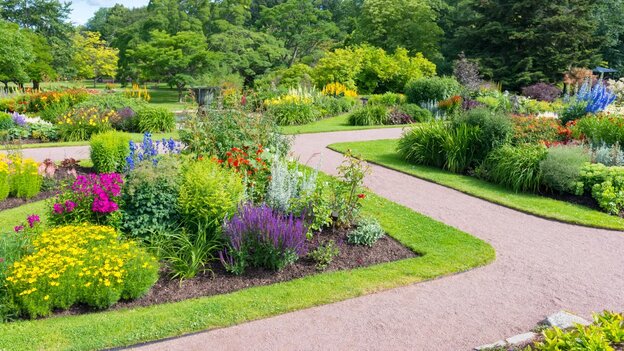
Balance is an essential principle in landscape design. It refers to the distribution of visual weight in a design to create a sense of equilibrium. There are two types of balance: symmetrical and asymmetrical.
Symmetrical balance involves creating a mirror image with equal weight on both sides of the design. This creates a formal and orderly feel and is perfect for classical or traditional landscapes.Asymmetrical balance is achieved by distributing different elements of varying visual weight on each side of the design. This type of balance brings a more casual and relaxed feel to the landscape and allows for a sense of movement and creativity.
Unity
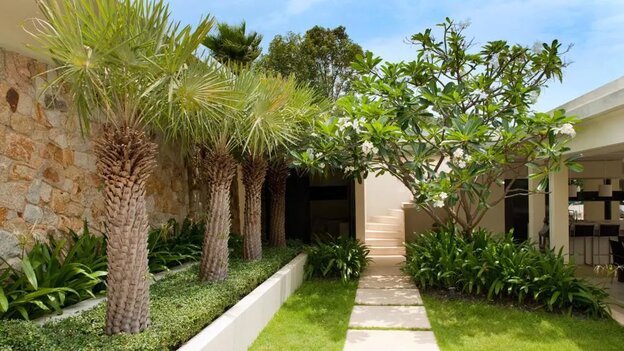
Unity is the cohesive and harmonious connection between elements in a landscape. It involves creating a sense of oneness throughout the design. You can achieve this with techniques such as:
- Repeating certain features or elements throughout the design, such as particular plant species or materials
- Using a consistent color palette that complements the surroundings and creates a unified look
- Creating a theme or style that ties all elements together and tells a cohesive story
Employing these techniques brings a sense of order and purpose to the outdoor space. This principle is closely related to the next one.
Order
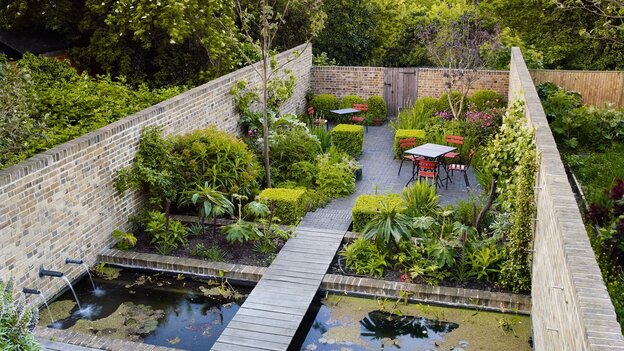
Order in landscape design involves the organization and arrangement of elements to create a sense of structure and hierarchy. It helps establish a clear visual path and guides the viewer’s eye through the space.
One way to achieve order is by considering the principles of balance and symmetry. Incorporate defined lines and geometric shapes to contribute to a more ordered and structured design. Additionally, using elements like pathways or borders can help delineate and define different areas within the landscape.
Order also extends to the maintenance and upkeep of the landscape. Regular maintenance ensures that the design stays neat and organized. This enhances the overall visual appeal and longevity of the space. So it’s important to look for ways to create a design that is easy to maintain.
Repetition
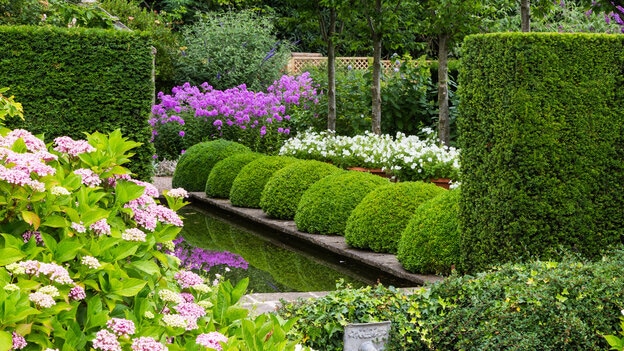
Repetition is a powerful principle that creates a sense of rhythm and continuity in landscape design. By repeating certain elements or patterns, you can establish a visual theme and create a sense of unity throughout the space.
Repetition can be achieved through various means, such as:
- Repeating specific plant species or groups of plants in different areas of the landscape
- Incorporating repeated shapes or patterns in hardscaping elements, such as paving stones or fencing
- Using consistent textures or colors to create a cohesive look
By strategically incorporating repetition, you can create a cohesive and visually pleasing landscape design with a strong sense of rhythm and flow.
Those are 4 important landscape design principles you should keep in mind with every single design. However, it can be a challenge to visualize the unity, balance, repetition and order in your final design.
That’s why smart landscapers use a 3D design program — like Contemporary Style Design — to visualize the final design. Contemporary Style Design is so easy to use that you can create professional renderings of your landscape design even with no previous 3D modeling experience. This helps you and your clients see how you implement key principles in your design.
Try Contemporary Style Design for FREE today.
How They Apply to Landscape Design Elements
Now that we’ve explored the key principles of landscape design, let’s discuss how they can be applied to specific landscape design elements.
Line
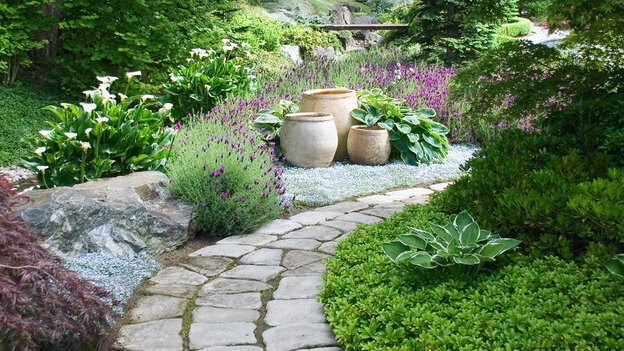
Incorporating different types of lines — straight, curved, diagonal, zig-zag, spiral — can create a sense of movement and guide the viewer’s eye. For example, using curving pathways can lead people through the different areas of the landscape. On the other hand, straight lines provide a more formal and structured feel.
Color
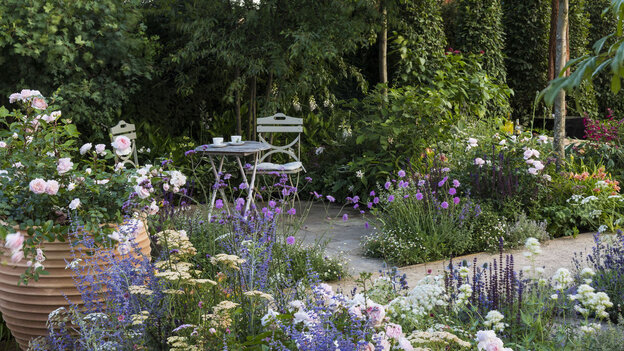
Choosing a harmonious color palette that complements the surroundings and balances the visual weight is essential. Colors can evoke specific moods and emotions — blue, green and purple for calm or red, orange and yellow for energy, warmth and vibrancy. So make sure to consider the overall atmosphere you want to create. And then consider how you can repeat certain colors throughout the design to create a cohesive and unified look.
Texture
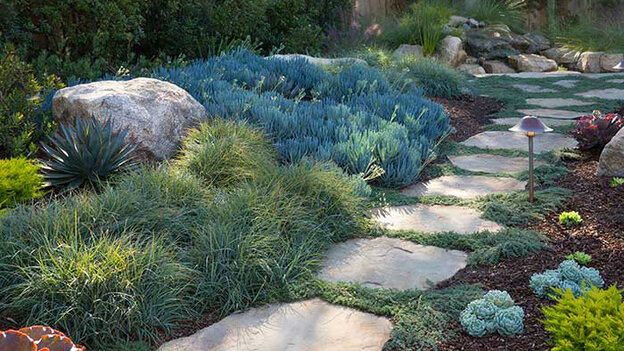
Texture adds visual interest and depth to a landscape design. By incorporating a variety of textures, such as smooth, rough, or soft, you can create contrast and highlight different elements. For example, pairing soft, feathery grasses with rough stone paving creates an intriguing visual contrast.
Form
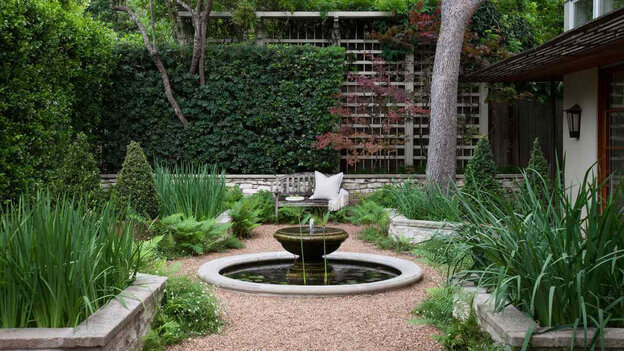
Form refers to the shape and structure of elements in a landscape design. By incorporating a variety of forms, such as round, square or cylindrical, you can add visual interest and create a dynamic scene.
Scale
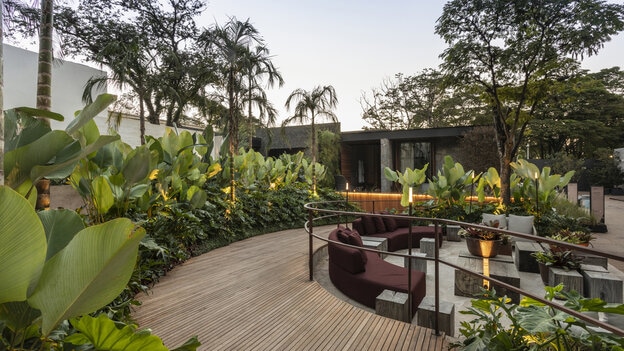
Scale relates to the size and proportion of elements within the landscape. It involves finding the right balance between large, dominant features and smaller, supporting elements. Proper scaling ensures that each element fits in the overall design without overwhelming or detracting from the space.
Conclusion
Incorporating the key principles of landscape design — balance, unity, order, and repetition — is essential for creating visually stunning and functional outdoor spaces.
Applying those principles to landscape design elements is so much easier when you have the right design software. Why not join all the design pros who are making the switch to Contemporary Style Design?
Sign up today to enjoy features like:
- Photorealistic 3D landscape renderings that help you land more clients
- Extensive design library with 1,000s of plants, materials and other design elements
- Time-saving features that boost your productivity




